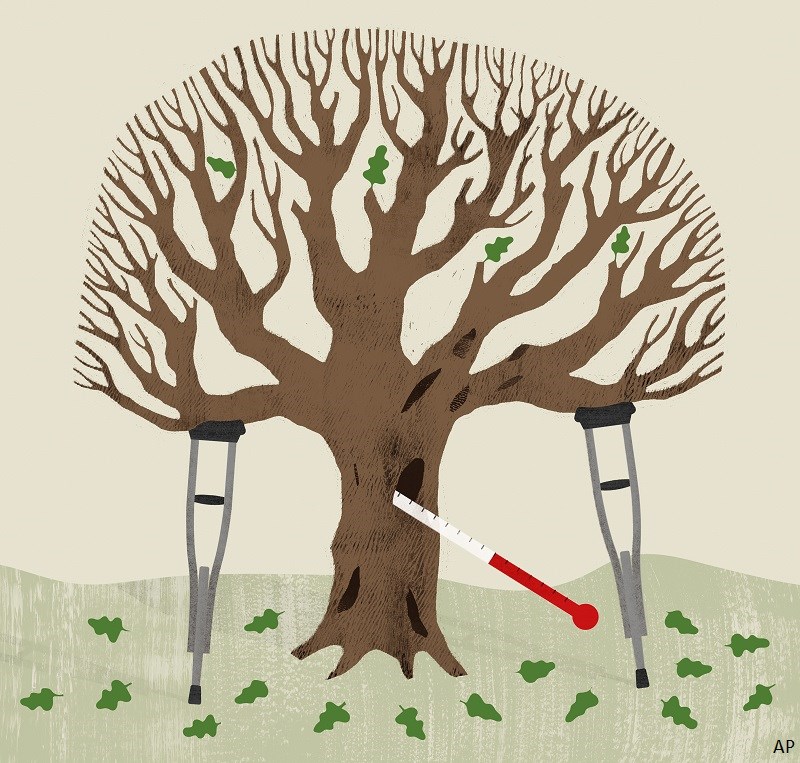
Last month, we talked about how, as per the “pain index”, the coronavirus bear market goes down in history as one of the least painful on record, lasting a total of about 120 trading days with a maximum drawdown of about 34%. While it is tempting to celebrate, Yanick Desnoyers, vice-president and senior economist at Addenda Capital believes it is far from obvious that we have what it takes to confront the next crisis. Here’s why.
Going into the COVID-19 pandemic, we had extremely low interest rates, huge, low-quality corporate debt, and high government debt. Now, the pandemic has prompted governments to heighten their deficits and debt burdens beyond measure.
In Canada, the projected 2020 deficit is $343 billion. “Previously, we were scared when the deficit reached $35 billion. Now, we’ve multiplied that by 10,” notes Desnoyers. In the U.S., the all-time highest deficit had reached US $1.1 trillion in 2008; at end of 2020, it will vault three times higher, and is projected to stand at US$ 2.9 trillion.
Meanwhile, interest rates are at historical lows. Yields on ten-year government bonds are at 0.7% in the U.S., at 0.65% in Canada.
Zombies, Zombies Everywhere!
The mountain of debt is propped up artificially by central banks. In the U.S., the Fed has purchased more than half of all new Treasury bonds issued, an artificial demand that encourages still more artificial demand on the part of market participants who, because of this Fed backstop, consider these assets much less risky. “Take away central banks and rates would explode. The market would say: ‘You’re not solvent!’” Desnoyers states.
With rates so low, “companies will be tempted to add on even more debt, and that will press on their capacity to grow” chimes in Crista Caughlin, portfolio manager at Mawer Investment Management, who agrees with Desnoyers’ reading of the situation. An increased load of debt will cause an economy already bloated with corporate zombies to multiply them even more, adds Desnoyers. (A zombie corporation is one whose profits are insufficient to cover interest payments on its debt).
Then Vs Now
Entering the 2008 crisis, the Fed’s overnight rate stood at 5.25%, which gave it an operating margin of 500 basis points to lower rates, easing pressure on financial players. Also, government debt and corporate debt held at more manageable levels. Entering the COVID-19 crisis, the Fed rate was 1.5%, giving it only a 150 basis points wiggle room. Government debt was still manageable, especially in Canada.
In the wake of the 2008 crisis, the U.S. Treasury bought into shares of countless financial institutions in distress and the Fed bought trillions of dollars of near worthless mortgage-backed securities and bonds. This time around, the Fed is directly buying corporate bonds and corporate bond ETFs, and the governments have distributed hundreds of billions worth of cheques to businesses and individuals.
So Now What?
What will it take next time? The answer “is far from obvious,” answers Caughlin. Granted, the pandemic is a major shock stifling a relatively fragile economy. But a next shock would not need to be as hard to destabilize an even more fragile economy.
“Policymakers have become easier and easier to avoid a debt burden to implode,” she comments. They recoiled before the pain that a flushing would inflict and, by doing so, “they simply created conditions that allowed the burden to become even heavier,” she adds. As a result, “we are confronting a day of reckoning,” warns Desnoyers. That translates into countless companies going bankrupt, massive unemployment, melting down of asset values, and millions of retirees scraping for bits of revenue.
What are the options before us? Caughlin identifies four scenarios, to which Desnoyers adds a fifth.
- Growth: We grow ourselves out of this debt mess. But with the debt burden pressing down on the economy, Caughlin believes that is the unlikeliest scenario.
- Inflation: We inflate ourselves out of it. “But without growth, sufficient inflation is also very unlikely,” Caughlin claims.
- Lowering Debt: Governments and central banks try to give themselves some wiggle room by lowering public debt, and delicately and slowly increase rates to navigate through the next crisis. But given that they have been unable to do so from 2009, it is also unlikely that they will succeed this turn around.
- Start Paying Back: Flush out what’s rotten in the system. That means that corporations get off their addiction to debt and start paying it back, sacrificing more potential growth in the process; and governments do the same. It means that central banks crank up rates in order to find their new equilibrium point, ready to take on some of the pain that will inevitably come with this. Considering that they recoiled from that pain in 2018, it is unlikely that they will face it next time, believes Caughlin.
- Debt Write Off: A last option is to do a massive debt write-off, submits Desnoyers. That would be very painful, and would probably only come after the whole situation has already imploded and wreaked havoc.
The choice we face is quite simple: either we continue along the present path and allow a volatile situation to finally explode, causing major economic and social hardship, or we pre-empt the hardship and slowly inflict it upon ourselves by going on a deleveraging diet.
Are You Getting The Right Returns?
Get Our Free Equity Indexes to Benchmark Your Portfolio Here



















